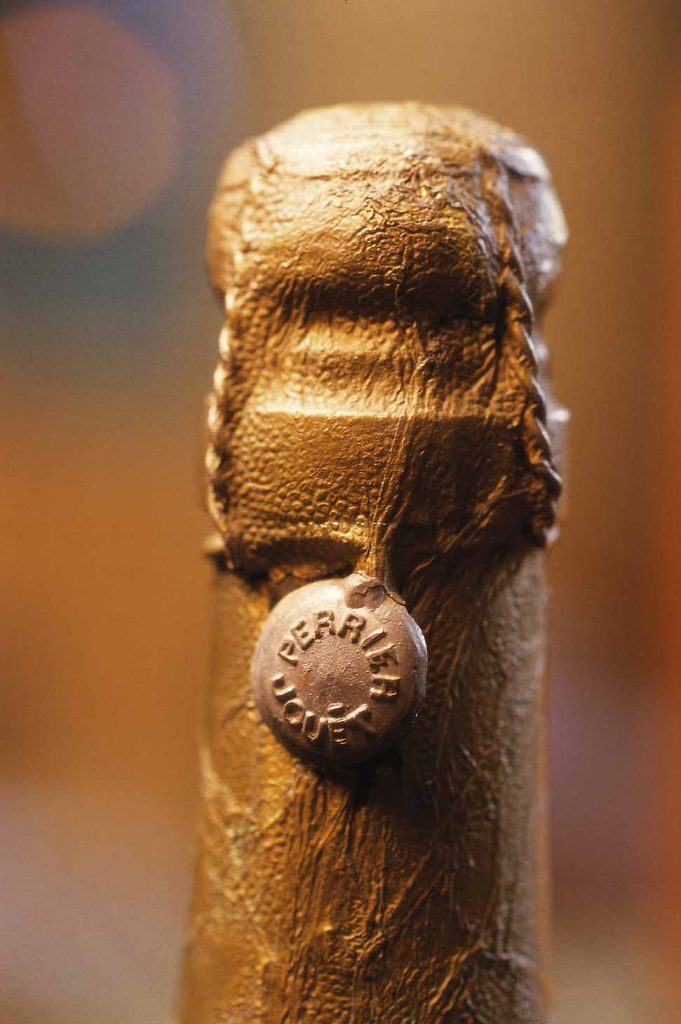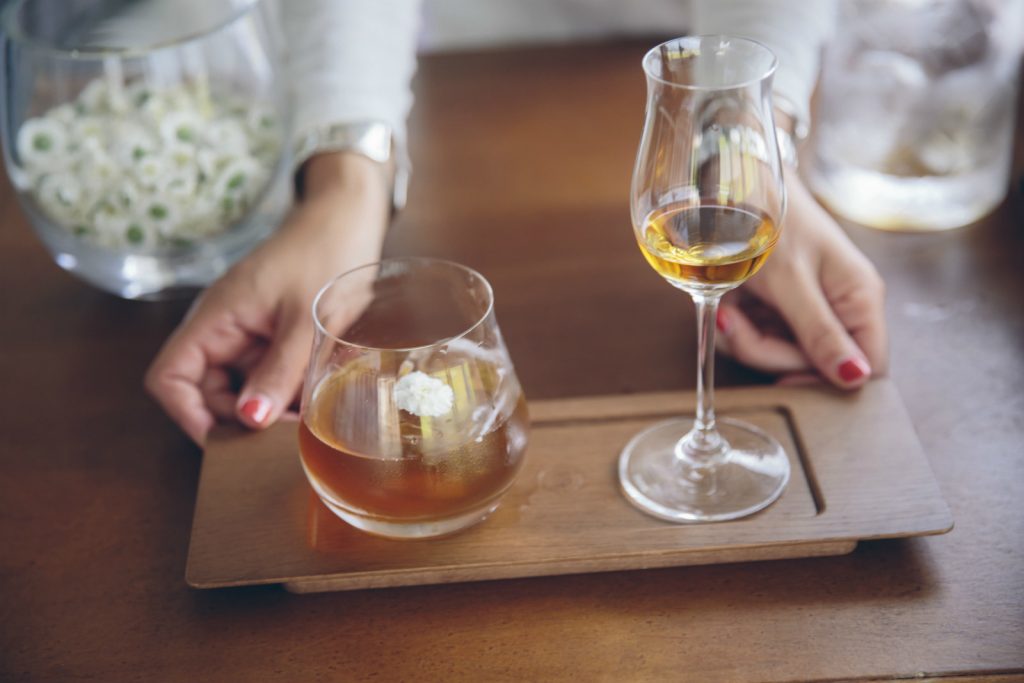The Treasures Within Perrier-Jouët’s Maison Belle Epoque
Inside the largest private collection of French Art Nouveau in all Europe

While the sight of toiling nomadic harvesters plucking stems of robust Pinot Meunier grapes in the autumn sun may be an eternal Champagne landscape, newly refurbished interiors of the 200-year-old Maison Perrier-Jouët in Epernay blend its reserve of Belle Epoque treasures with a trove of installations by 21st Century artists. The former is, in fact, the largest private collection of French Art Nouveau in all Europe while the latter features artists who’ve drawn their inspiration from the most ephemeral champagne bubble—all in a modern embrace of the bygone era’s progressive yet fleeting spirit.
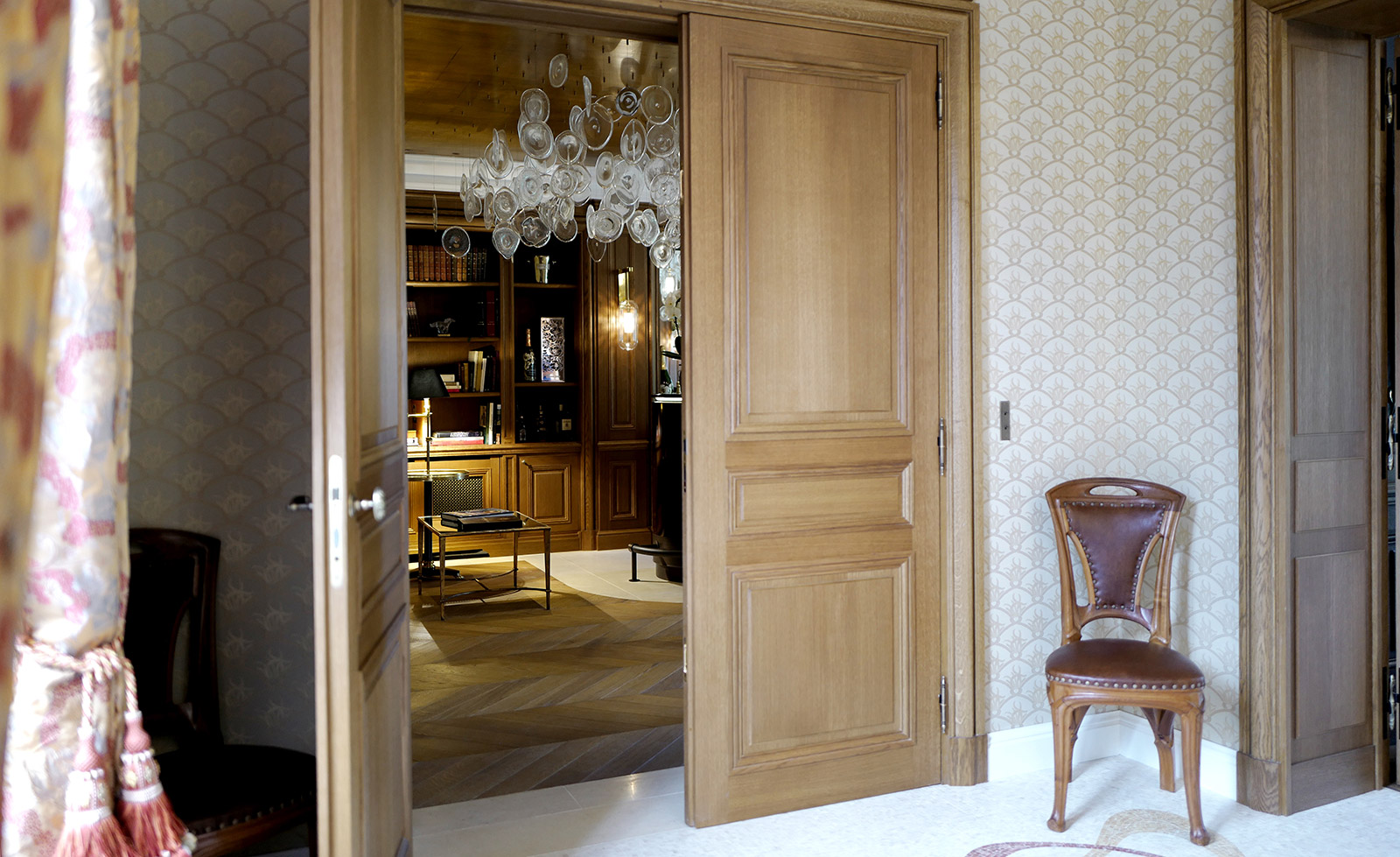
Past the Maison’s entrance on L’Avenue de Champagne, where every estate sits atop its own reservoir of product, guests stand before planters and a door-frame crafted by Hector Guimard, whose fanning Metro entrances and fluid architecture once dominated pre-war Paris. It’s the entrance to another time, to a network of salons layered with petite works like an original painting by Henri de Toulouse-Latrec, whose original portrait of the singer Yvette Guilbert was both beloved and reviled by its subject. It’s that personal nature of so many of the property’s features that allow the house to feel most like a home.
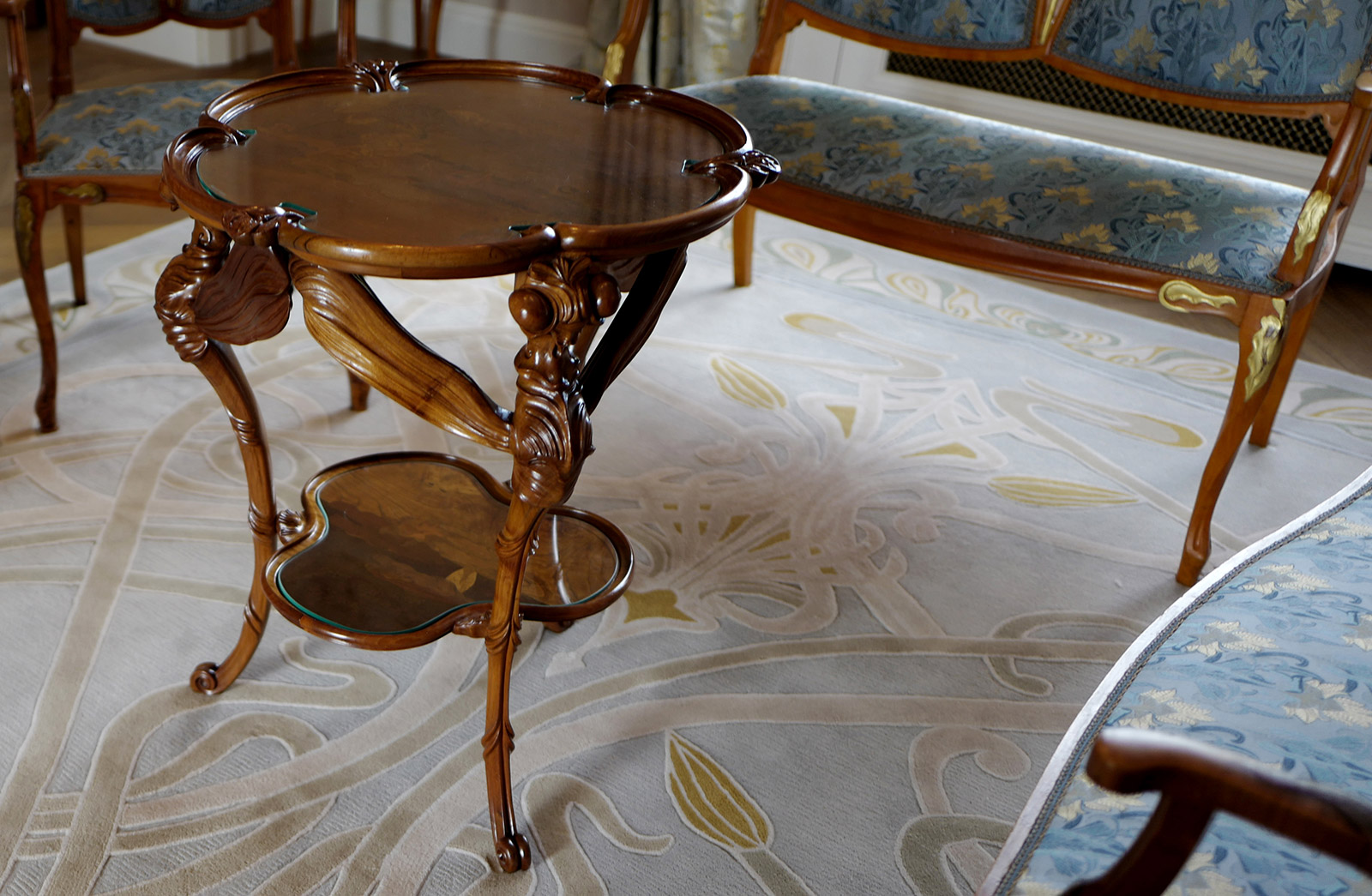
Down a hallway visitors breeze past a kinetic table by Mischer’Traxler Studio. All across the grand oak table inlaid flora and fauna rise up in a dance that pays tribute to Charles Perrier’s passion for botany, but as guests sweep past toward the barroom, the landscape’s gentle nature retreats back to a state of marquetry. A contrast and source of inspiration sits nearby; a walnut table by Emile Galle, the Art Nouveau pioneer who created the Belle Epoque bottle’s signature motif of Japanese white anemones, is supported by three delicate dragonflies still yet to shirk.

The bar is the social hub of the Maison, where bottles and drinkers together sit beneath “All’ombra della Luce” (translation, “In the Shadow of Light”) by contemporary Japanese artist Ritsue Mishima. Champagne bubbles are reimagined in Murano glass so fine it’s impossible to distinguish if they’re rising up or hanging down, especially following an evening of festivities.
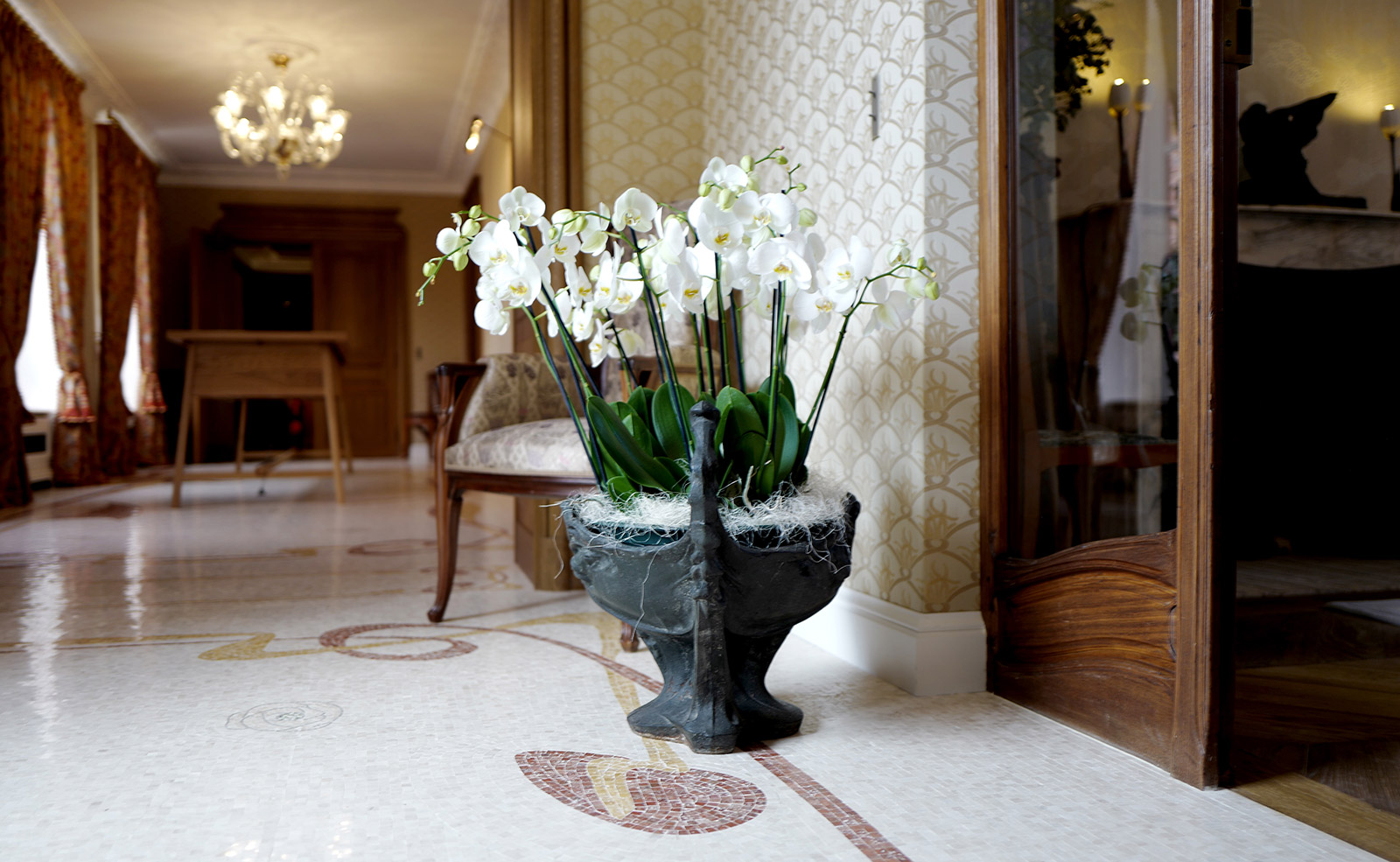
Sound sleep follows steadfast uncorking, and the second-story bedrooms, each named for an icon of Art Nouveau, feature museum-worthy artifacts with no perimeter of velvet ropes. In the bedroom named for Guimard guests can lay cradled within a swooping bed frame of his own conception, with drawing blocking out the morning light. Unfilled bottles remain at rest in the cellars, where method dates back to the champagne’s origins. Even here, where water seeps through chalk tunnels light cannot penetrate, art still finds a way in.
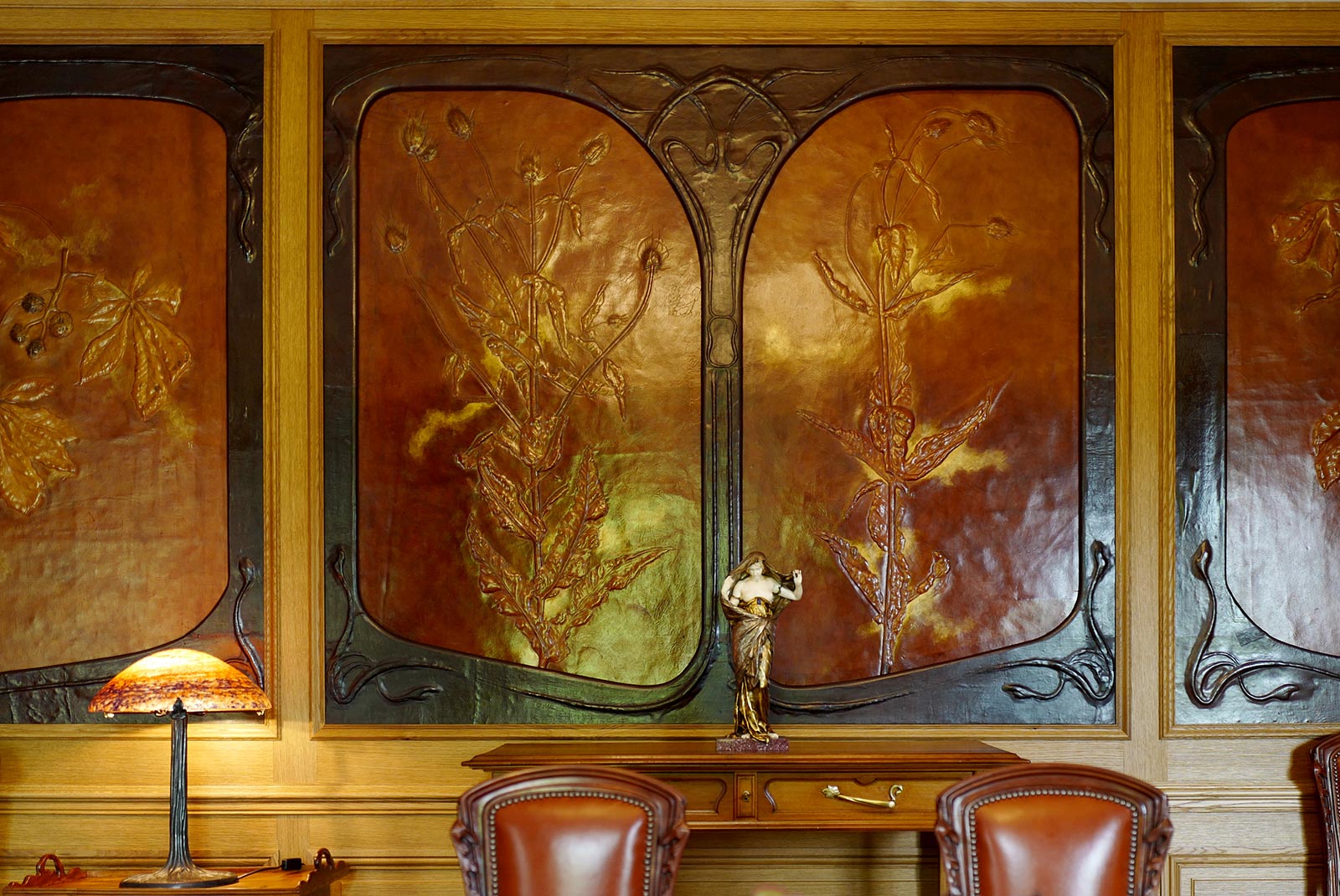
Similar to Ritsue’s floating glass, Studio Glithero‘s “Lost Time” celebrates a shadowy nook by stringing glass beads over a shallow pool, their shape reflecting both champagne flutes and the bubbles that cling to them. The mirror image they cast goes far deeper than the water below, and it highlights both the depth of flavor and art history one experiences overnight at Maison Belle Epoque, upon reflection.
Images courtesy of Adam Robb
